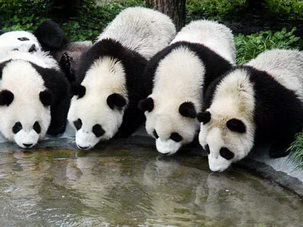
 China Tours
China Tours Tibet Tours
Tibet Tours China Theme Tours
China Theme Tours Off The Beaten Track
Off The Beaten Track Yangtze Cruises
Yangtze Cruises China Trip Planner
China Trip Planner Travel Agents
Travel Agents


We had a wonderful time in Tibet. We have learned a lot about this unique destination because of the wonderful guide Degyi who is so knowledge and always available towards our tours. We stayed at the Shangri-La Hotel Lhasa, and we would never imagine a Tibet travel could be so nice and amazing without the help of Degyi.
Also, thanks a lot to our Tibetan driver Mr.Wongdun for his safe driving and a good sense of service along the way.
We shall return Tibet in the near future!
P.B. and A. A - Europe
Tibet Travel
June 2018 (Private Tibet Journey from Kathmandu)

 Chengdu is the capital of Sichuan Province in south-west China. Located in the west of Sichuan Basin and in the center of Chengdu Plain, Chengdu covers a total area of 12.3 thousand square kilometers (4,749 square miles) with a population of over 12 million.
Chengdu is the capital of Sichuan Province in south-west China. Located in the west of Sichuan Basin and in the center of Chengdu Plain, Chengdu covers a total area of 12.3 thousand square kilometers (4,749 square miles) with a population of over 12 million. Benefiting from Dujiangyan Irrigation Project which was constructed in 256 B.C., Sichuan Province is reputed as "Tian Fu Zhi Guo", literally a place richly endowed with natural resources. Chengdu, as the capital, is extremely productive. The Min and Tuo Rivers, two branches of the Yangtze River, connected to forty other rivers, supply an irrigation area of more than 700 square kilometers (270.27 square miles) with 150-180 million kilowatts of water. Consisting of abundant mineral resources, the land is extremely fertile. The history of Chengdu can be traced back 2,400 when the first emperor built his capital here and named the city. Through thousands of years its original name has been kept and its position as the capital and as the significant center of politics, commerce and military of the Sichuan area (once called Shu) has remained unchanged. Since the Han (206B.C.-220) and Tang (618-907) Dynasties when its handicraft industry flourished, Chengdu has been famous for its brocades and embroideries. Shu embroideries still enjoy a high reputation for their bright colors and delicate designs, ranking among the four main embroideries in China. Chengdu was the place where the bronze culture, an indispensable part of ancient Chinese culture, originated, the place where the Southern Silk Road started, and the place where the earliest paper currency, Jiaozi (not the dumpling!), was first printed. It is listed among the first 24 state-approved historical and cultural cities and owns 23 state and provincial cultural relic units.
In addition to its profound historical and cultural background featuring historic places of interest such as the Thatched Cottage of Du Fu , Wuhou Memorial Temple and Wenshu Monastery , etc, natural beauty abounds in surrounding areas such as in the Jiuzhaigou Scenic Area and Huang Long Valley (Yellow Dragon Valley) . The natural habitat of giant pandas, Chengdu Panda Breeding and Research Center, supports the world's only giant panda breeding and research base. Sampling the famous Sichuan cuisine is a must on a trip to Chengdu. Enjoying the food as well as the culture, shopping and having tea at a teahouse afford a deeper understanding of Chengdu.
Chengdu is the gateway to scenic Jiuzhaigou, Taoist Qingcheng Mount and famous Dujiangyan Irrigation Project used for more than 2,200 years (World Cultural Heritage by UNESCO), the Buddhist mountains of Emei Shan and Le Shan (World Cultural Heritage by UNESCO), and one of the most important panda breeding centers. It's also a traveler's haven to see local people's leisure life of drinking tea, playing Mahjong and a place to gather the relevant travel info. People are friendly and the pace unrushed. And because Chengdu is one of the few cities with daily flights to Lhasa, many travelers come here to arrange transportation to Tibet.
_______________________________________________________________________________________
Things To Do in Sichuan - Sichuan Attraction Guide
Giant Panda, Chengdu
Jiuzhaigou National Park
Huanglong National Park
Mt.Emei
Mt.Minya Konka
Dazu Stone Carvings
Leshan Giant Buddha
Dujiangyan Irrigation Project
Du Fu Thatched Cottage
Wuhou Memorial Temple
Wangjianglou Park
Langzhong Ancient Town, Sichuan
Mount Qingcheng
Taoping Qiang Village, Sichuan
Litang Monastery
Tagong Monastery
Sanxingdui Museum
Jinsha Site Museum
China Trip Planner | Travel Agents | About Us | Why Us | Contact Us | How to Pay | How to Book - Terms & Conditions | Site Map
Copyright © 2010 - 2030 All Rights Reserved.


 0086-28-85711328
0086-28-85711328 0086-28-85546015
0086-28-85546015




